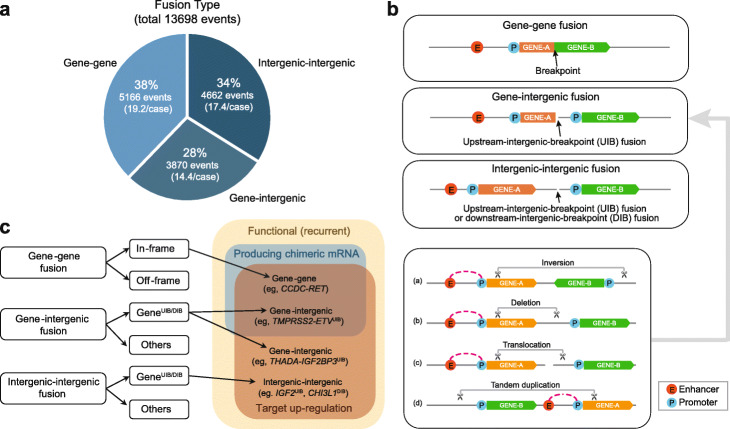Fig. 1.
Classification of fusion events. a The distribution of different fusion types (gene-gene, gene-intergenic, intergenic-intergenic). b Illustrations of the three fusion types. The bottom two cases show a breakpoint upstream of an intact fusion partner. Taking gene-intergenic fusion as an example, we also illustrate how various types of DNA structural variants (inversion, deletion, translocation, and tandem duplication) could result in a geneUIB fusion. c Among the recurrent fusions, some produce chimeric mRNAs with increased expression, whereas others upregulate by promoter swapping or other mechanisms without chimeric RNAs. Gene-intergenic fusions with upstream-intergenic-breakpoints (UIB) can produce target upregulation with or without chimeric mRNAs; the mechanism for the generation of chimeric mRNA without a genic breakpoint is described in the text. Intergenic-intergenic fusions can also result in target upregulation. Downstream-intergenic-breakpoint (DIB) cases also occur but are not illustrated here

